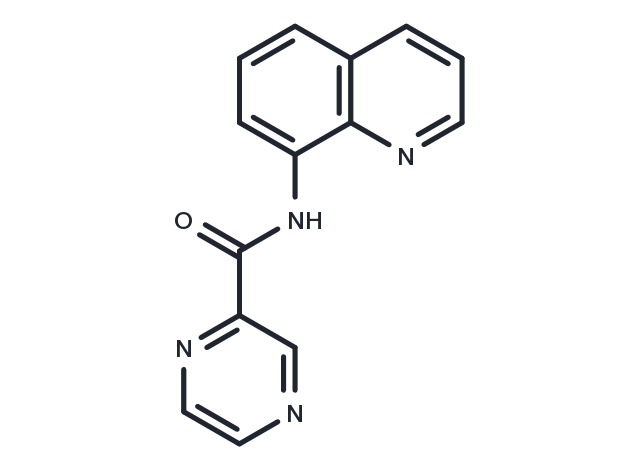Powder: -20°C for 3 years | In solvent: -80°C for 1 year


QN523 represents a novel scaffold with drug-like properties, showing potent in vitro cytotoxicity in a panel of 12 cancer cell lines. QN523 shows significant in vivo efficacy in a pancreatic cancer xenograft model. Autophagy is a major mechanism of action.

| Pack Size | Availability | Price/USD | Quantity |
|---|---|---|---|
| 1 mg | In stock | $ 48.00 | |
| 5 mg | In stock | $ 113.00 | |
| 10 mg | In stock | $ 178.00 | |
| 25 mg | In stock | $ 363.00 | |
| 50 mg | In stock | $ 572.00 | |
| 100 mg | In stock | $ 822.00 | |
| 500 mg | In stock | $ 1,690.00 | |
| 1 mL * 10 mM (in DMSO) | In stock | $ 109.00 |

| Description | QN523 represents a novel scaffold with drug-like properties, showing potent in vitro cytotoxicity in a panel of 12 cancer cell lines. QN523 shows significant in vivo efficacy in a pancreatic cancer xenograft model. Autophagy is a major mechanism of action. |
| In vitro | QN523 showed significant cytotoxicity with IC50 values ranging from 0.1 to 5.7 μM across 12 cell lines. QN523 at 0.5 μM and gemcitabine at 0.1 μM arrested MIA PaCa-2 cells in the S-phase following 24 and 48 h treatment[1]. |
| In vivo | In NOD/SCID mice of MIA PaCa-2 xenografts, QN523 at 10 mg/kg (intraperitoneal administration) shows no significant delay in tumor growth from day 1 to day 9. QN523 at 20 mg/kg from day 10 and continued until day 44 delayed growth of the MIA PaCa-2 xenograft starting from day 17. On day 44 80% inhibition of tumor growth was observed. No symptoms of gross toxicity such as weakness, weight loss or lethargy were observed in the QN523 treatment group[1]. |
| Molecular Weight | 250.26 |
| Formula | C14H10N4O |
| CAS No. | 878581-60-3 |
Powder: -20°C for 3 years | In solvent: -80°C for 1 year
DMSO: 16.2mg/mL (64.7mM)
You can also refer to dose conversion for different animals. More
bottom
Please see Inhibitor Handling Instructions for more frequently ask questions. Topics include: how to prepare stock solutions, how to store products, and cautions on cell-based assays & animal experiments, etc.
QN523 878581-60-3 Autophagy QN-523 QN523 QN 523 inhibitor inhibit
